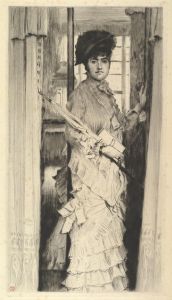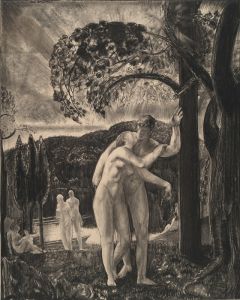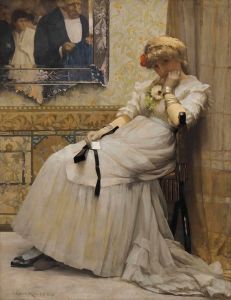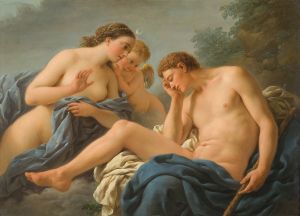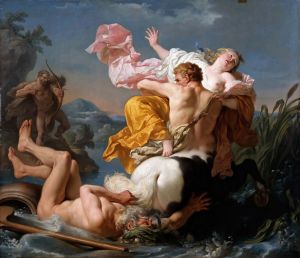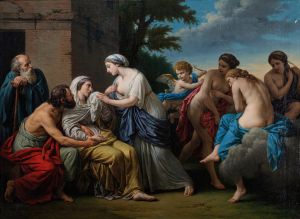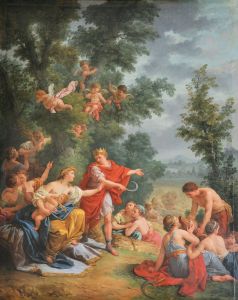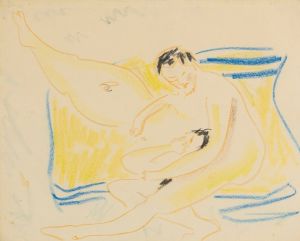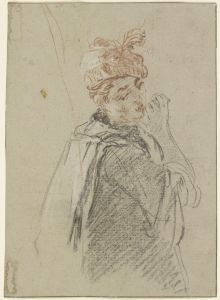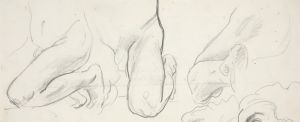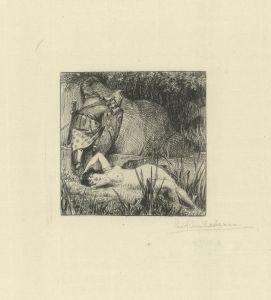
L’Amour à l’affût
A hand-painted replica of Louis-Jean-François Lagrenée’s masterpiece L’Amour à l’affût, meticulously crafted by professional artists to capture the true essence of the original. Each piece is created with museum-quality canvas and rare mineral pigments, carefully painted by experienced artists with delicate brushstrokes and rich, layered colors to perfectly recreate the texture of the original artwork. Unlike machine-printed reproductions, this hand-painted version brings the painting to life, infused with the artist’s emotions and skill in every stroke. Whether for personal collection or home decoration, it instantly elevates the artistic atmosphere of any space.
Louis-Jean-François Lagrenée was a prominent French painter of the 18th century, known for his contributions to the Rococo and Neoclassical movements. Born in Paris in 1725, Lagrenée was a student of Carle Van Loo, a leading French painter of the time. Lagrenée's work is characterized by its elegance, refined technique, and often mythological or allegorical themes.
One of Lagrenée's notable works is "L’Amour à l’affût," which translates to "Love on the Lookout." This painting exemplifies Lagrenée's skill in capturing the delicate interplay of emotion and narrative through his art. While specific details about the painting's creation, such as the exact date or commission context, are not widely documented, it is consistent with Lagrenée's oeuvre during the height of his career.
"L’Amour à l’affût" is a fine example of the Rococo style, which was prevalent in France during the 18th century. This style is characterized by its ornate detail, lightness, and emphasis on themes of love and nature. In this painting, Lagrenée likely explores the theme of love, a common subject in Rococo art, often depicted through allegorical figures such as Cupid or Venus.
The composition of "L’Amour à l’affût" would typically feature a harmonious arrangement of figures and landscape, with a focus on grace and beauty. Lagrenée's use of color and light would enhance the romantic and idyllic atmosphere, drawing the viewer into the narrative. His ability to convey emotion through subtle gestures and expressions is a hallmark of his work.
Lagrenée's career was marked by significant achievements and recognition. He was admitted to the prestigious Académie Royale de Peinture et de Sculpture in 1755, where he later became a professor and director. His influence extended beyond France, as he spent time in Russia working for Empress Catherine the Great and contributed to the development of the arts there.
Despite the lack of extensive documentation on "L’Amour à l’affût," Lagrenée's legacy as an artist is well-established. His works are held in high regard and can be found in major museums and collections worldwide, including the Louvre in Paris. Lagrenée's paintings continue to be studied and appreciated for their technical mastery and the way they encapsulate the artistic trends of their time.
In summary, "L’Amour à l’affût" by Louis-Jean-François Lagrenée is a testament to the artist's skill and the Rococo style's charm. While specific details about the painting may be scarce, its thematic focus on love and beauty aligns with Lagrenée's broader body of work. His contributions to art during the 18th century remain influential, reflecting the cultural and artistic currents of his era.





